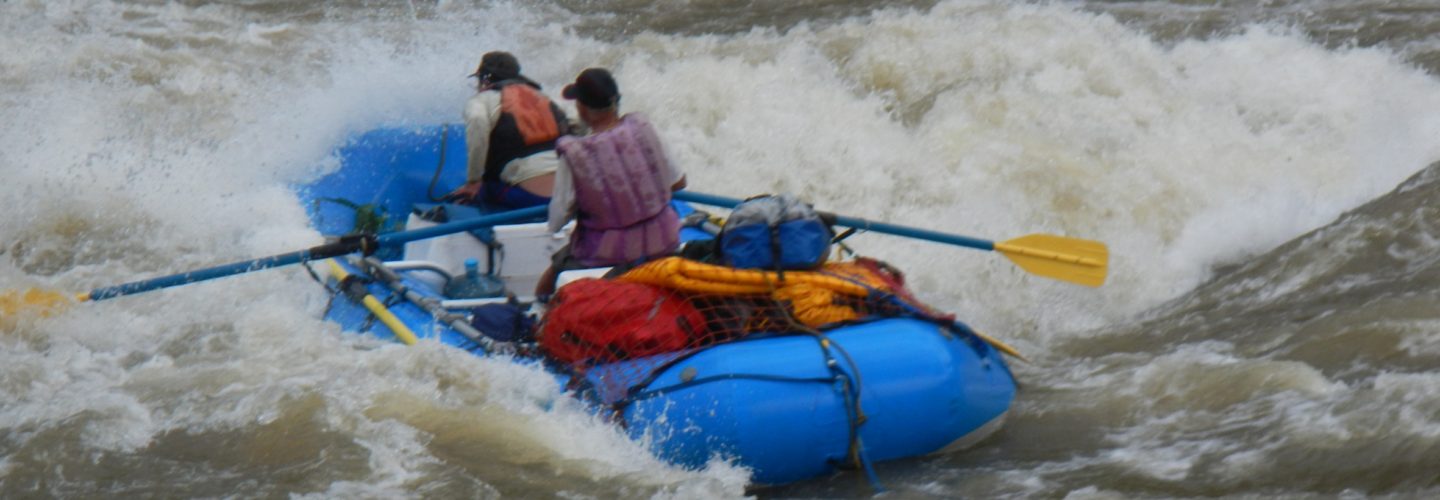Colonel P.H Fawcett was the first to run Tambopata River in 1911. His craft was a raft made of lashed logs. Tales of this incredible explorer can be found in a hard to find autobiography called “Exploration Fawcett”. This same individual made the first descent of the nearby Rio Tuichi in Bolivia during the same time period.
In 1981 Alejandro (Chando) Gonzalez made the first complete navigation of the river from Putina Punko (900 meters) to Puerto Maldonado.
The logistics of arriving to and leaving from the Tambopata are challenging. Most trips originate out of Cuzco and involve raft support. Commercial outfitters such as Mayuc or Apumayo Expediciones can arrange the transportation and provide raft support. Our trip in early July 1994 had four kayakers, one shredder and two rafts. We started in Cuzco in a four-wheel drive Mercedes bus hired from a company called Explorers. An overnight trip brought us to Puno on the shores of Lake Titicaca where we spent the day and early evening visiting The Uros people who live on floating islands of reeds. The next day we set off on a 24 hour journey that back tracked us to Juliaca and then up and over a 5000 meter pass, through a snowstorm and down into the high jungle of Sandia. From here the road to San Juan de Oro (Putina Punko) deteriorated considerably. With recent rains the mud was deep and the switchbacks slippery and dangerous. Putina Punko is a small but busy village at the end of the road. Upon our arrival we witnessed bulldozers blazing the road ever deeper into the jungle.
Here the river is small around 400 CFS but more than enough to float a raft. For the next ten days we saw no people but lots of animals. Blue Morpho butterflies were almost always dancing around as were the golden tailed birds called Oro Pendulas, which built their vertical hanging nests in the same fashion as a weaver. Mammals witnessed included rare sightings of both the endangered Giant Otter and the Black Caiman, Capybaras, Ronsocos, Tapir and Howler Monkeys. Although we never saw a Jaguar, we did find a set of fresh prints outside the tents one morning.
The whitewater was never intense but one class four canyon came as a surprise and flipped a raft. Beaches are plentiful but I have been told flash floods can force you to slash out campsites under the canopy of the trees. Bugs are brutal and can leave you coated in welts.
On the 8th day we came across our first signs of people (apart from passing a hut occupied by two Bolivian soldiers on day 3). It was one boat with 3 fishermen who had motored upstream from Puerto Maldonado. We traded some of our food for three different types of fish, one of which was called Don Sello and was the best fish I ever ate.
Day nine is the highlight of the trip. We woke before dawn and walked down the bank of the river and hid behind a blind formed by some fallen trees. As the sun rose, a cliff on the opposite side of the river exploded with sights and sounds. We were at one of the few known “Culpas” or clay licks and thousands of parrots and Macaws were arriving in droves. The birds diet consists of seeds and fruits. Many of the seeds contain toxins that can kill the birds. By some sort of biological miracle the birds have learned to eat the clay, which neutralizes the toxins. We thought we were well hidden and were surprised when one particular group of Macaws started to circle above us shouting and shrieking. They descended and landed on our shoulders and heads. Later we found out that these birds had fallen out of their nests as hatchlings and had been raised in a jungle orphanage.
Just down stream are both a jungle research center and the rustic Tambopata eco-lodge. In Cuzco we had booked for cabins for one night so the rafts were pulled onto shore for the evening. A visit to the research center allowed us to meet several volunteers including a herpetologist who just that day had documented two species of frogs previously unknown to science. In all the Tambopata and nearby Manu Biosphere contains some the highest concentrations of special diversity on the planet.
On the tenth day we floated for four hours until Peki- Peki’s (motorized dugouts) met us for the four-hour trip to the booming jungle town of Puerto Maldonado. From here we caught a flight back to Cuzco completing a two-week roundtrip journey.
Useful maps: 29-Y, 29-Z, 28-Z
